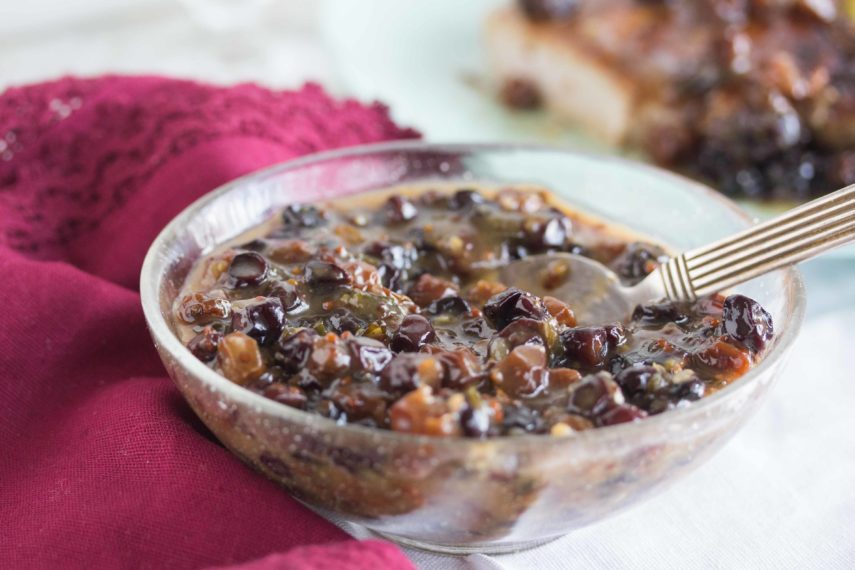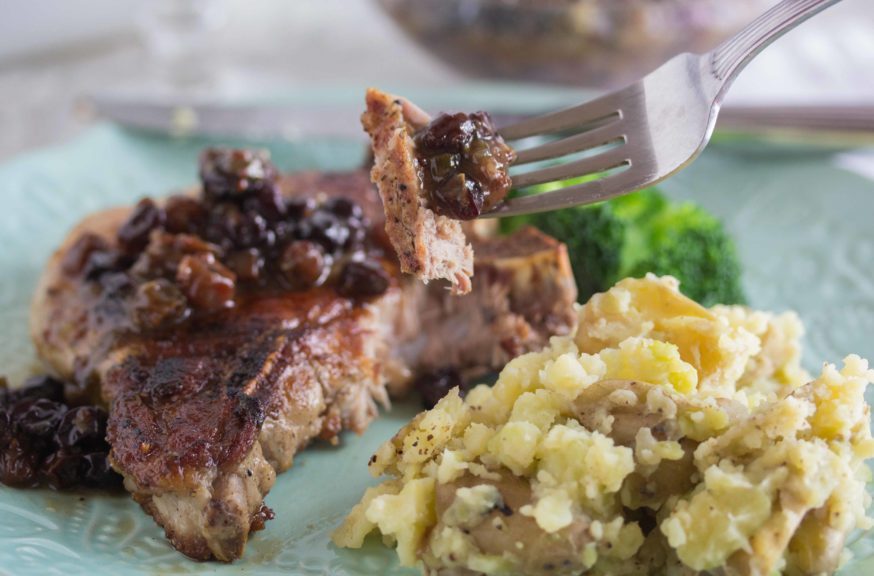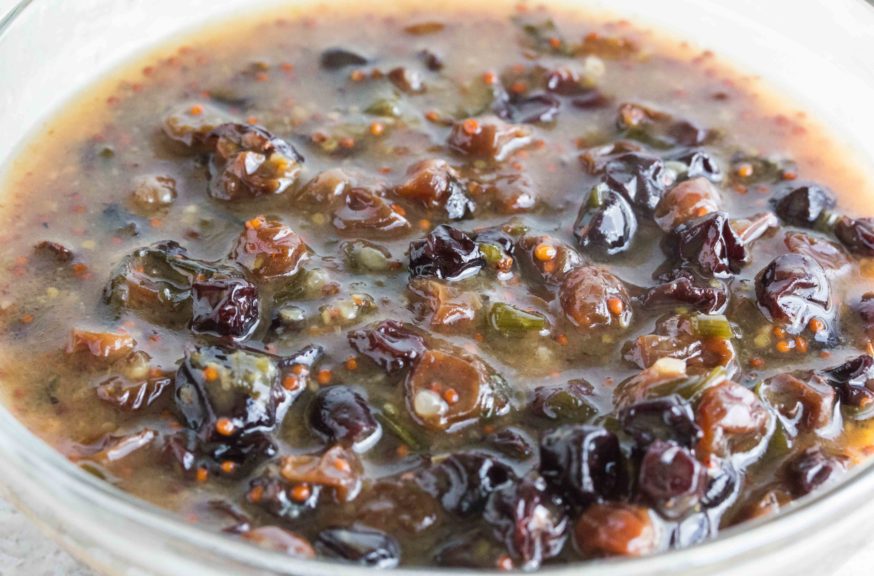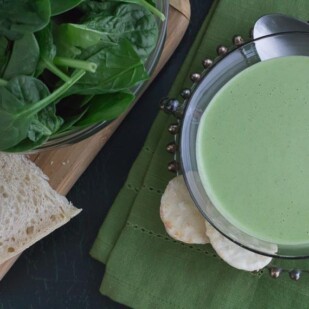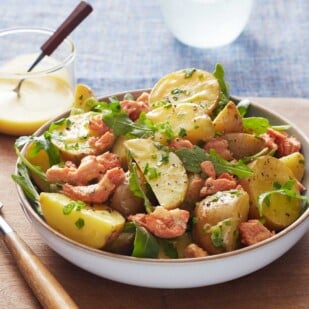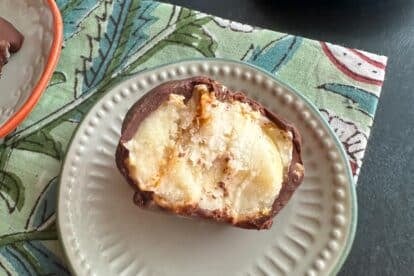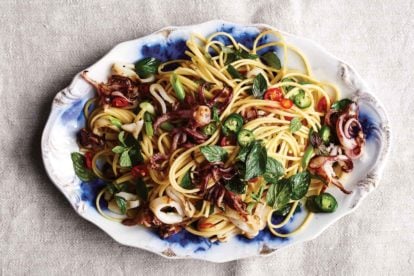Modernizing a Classic Mostarda
Mostarda is a classic Italian condiment that combined candied fruit in a mustard sauce, yielding a sweet and tangy accompaniment for poultry and game, in particular. It pre-dates the Renaissance and there were and are many variations, including one made in the fall taking advantage of the grape harvest.
It is thought that perhaps the name came from the must, or “mosto”, which was the freshly pressed grape juice. Our Raisin Miso Mostarda takes some liberties, such as with the inclusion of miso, but is in essence a modernized version of the classic, and since raisins are indeed grapes, we have that traditional connection.
Note: This post may include affiliate links. Please see our complete disclosure here.
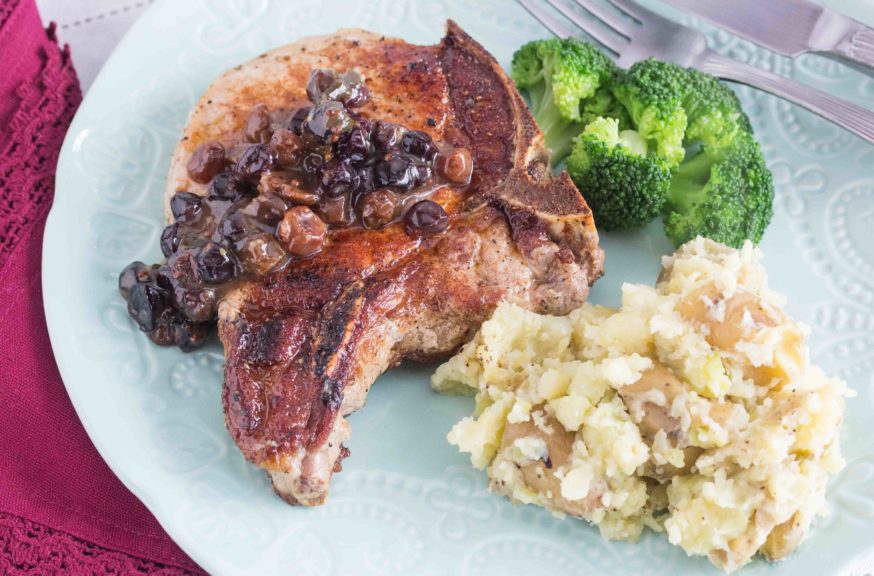
We Find Inspiration for Low FODMAP Versions Everywhere!
This recipe was inspired by this recipe in Food & Wine that used cherries, which are high in FODMAPS even in their fresh state. We do love this condiment with poultry and it simply shines with pork, as you can see in the image – and the substitution of raisins for the dried cherries worked perfectly.
It keeps very well so one batch can enliven your food for a week or so and it is so quick and easy to make we do recommend making the full batch, although the recipe can be halved. Pay attention to serving size to keep it low FODMAP. A generous tablespoon is recommended.
We made the batch of Raisin Miso Mostarda pictured with Rayzyns, which are dried wine grapes. In other words, really amazing raisins!
For our recipe, we used a combination of their Cabernayzyn (Cabernet dried grapes) and their Chardonayzyn (Chardonnay dried grapes). They offer a Merlot version, too. If these intrigue you, check out the red wine compote we made as well.
Miso is Versatile
One reason we were drawn to the original idea for this recipe is that it called for miso, which is a fermented soybean condiment. It is low FODMAP and one that we always have around.
Traditionally used in Japanese cuisine, we loved this outside-the-box use of it, with more European flavor combination. Be bold! You can also read more about miso in our article about soy.
Let’s Make Mostarda!
And if you are a DIY condiment lover, check out our Low FODMAP Mint Chutney, too!
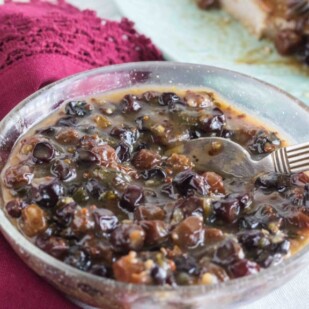
Raisin Miso Mostarda
This sweet and tangy condiment combines raisins, vinegar, miso and mustard and can be made in less than 20 minutes. We love it with pork and poultry but you will think of other uses as well.
Low FODMAP Serving Size Info: Makes 2 ½ cups (600 ml); serving size 1 generous tablespoon
Ingredients:
- 2 tablespoons Garlic-Infused Oil, made with olive oil or purchased equivalent
- 1/2 cup (32 g) finely chopped scallions, green parts only
- 2 cups (332 g) raisins, a mixture of dark and golden or Rayzyns
- 1 cup (240 ml) water
- 1/2 cup firmly packed light brown sugar
- 1/4 cup (60 ml) rice vinegar
- 1/4 cup (60 ml) light or white miso
- 3 tablespoons coarse ground mustard
- Kosher salt
- Freshly ground black pepper
Preparation:
-
Heat oil in a medium sized saucepot over medium heat until gently shimmering. Add scallions and sauté for a minute or two until softened but do not let them brown. Add raisins, water, brown sugar, vinegar, miso and mustard and stir together well. Bring to a simmer, taste and season with salt and pepper, and continue to cook, stirring occasionally for about 10 minutes or until the sauce is thick and glossy. Cool.
-
Mostarda may be served warm or at room temperature. Refrigerate in an airtight container for up to 2 weeks. Bring to room temperature before serving.
Notes:
If You Can Tolerate
Fructans:
- If you have passed the garlic fructan Challenge you may use regular olive oil and sauté 1 minced garlic clove along with the scallions.
- If you have passed the onion fructan Challenge you may use ½ cup (72 g) of finely chopped white or yellow onion in lieu of the scallions.
- If fructans in general are not too bad for you, you could try a larger serving size of the mostarda. Just realize that if you make all these changes at once in regards to the fructan content that you might push yourself over the edge. Our recommendation? Try 2 tablespoons as a serving but don’t eat ½ cup (120 ml) of it!
Nutrition
All nutritional information is based on third-party calculations and should be considered estimates. Actual nutritional content will vary with brands used, measuring methods, portion sizes and more. For a more detailed explanation, please read our article Understanding The Nutrition Panel Within Our Recipes.
